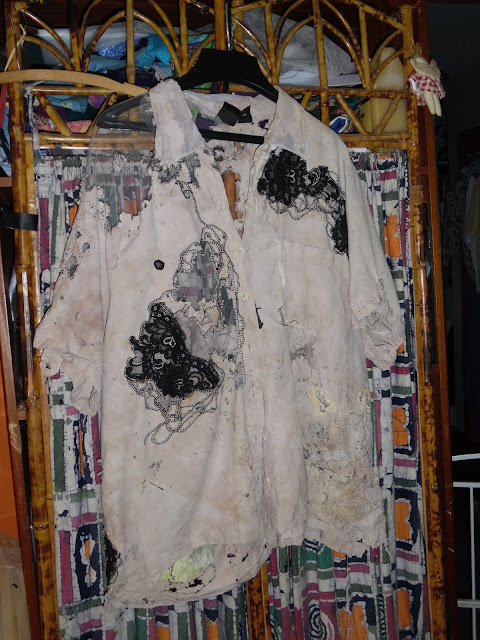Edited to include one more picture, see below**
Stitching on melt away stabilizer--there are lots of different weights of stabilizer to choose from, and you can also double up a lighter weight one if that's all you have in your stash.
here are products sold for nursing homes and hospitals sometimes called "bed bug bags" that are actually dissolving laundry bags and they're pretty large and a lot cheaper than Solvy or other craft products--just google them for more info. The only down side is that you might have to buy a pretty large quantity at once.
Use a hoop if you have one, I didn't because I couldn't find mine when doing this... Draw your lines with a sharpie if straight lines are important to you because the stabilizer loves to pucker up! Use a zigzag stitch for lines you want thicker, you'll only have to go over them a couple of times, too.
The basic grid was stitched with a narrow zigzag stitch.
Then I dropped the feed dogs, put on my free motion foot, and did a bunch of designs inside the grid, making sure all of my lines were attached to something else.
Here is the piece after melting the solvy, you can see that I wasn't 100% perfect at getting all my edges attached:
After it has dried, I plan to stitch this down using FM quilting onto a piece of felting I did a while back.
I also couched some yarn down in small leaf shapes, then filled them in with thread just to see if that would work--
**you can also use nylon netting inside two layers of Solvy to provide more stability. Here I sandwiched some netting, then put a pink fabric circle on top and stitched it down, also adding some petals. When the Solvy is melted, the netting can be melted using the stencil tool.
These are just some starting points, and I know all the readers of this blog have tons of great ideas of their own. Hopefully I've inspired someone this month, it's been a lot of fun!


















































